Introduction
Product Overview
{{section_header}}{{section.name}}{{/section_header}}
Meet the SYNC by 50 headphones.
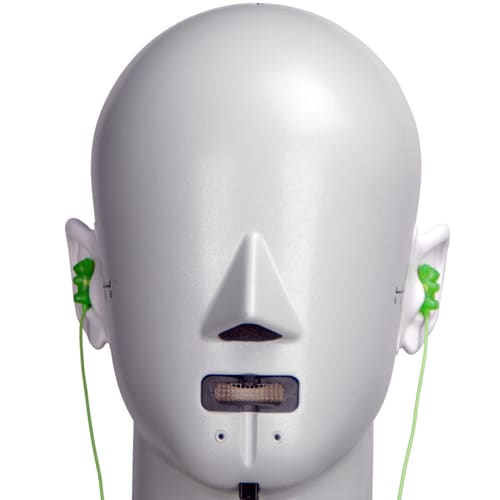
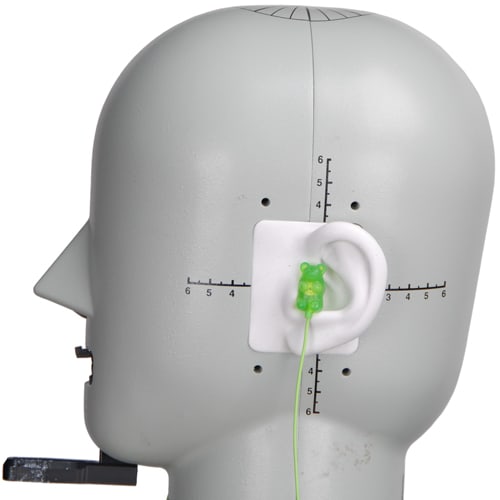
Speakers
{{section_header}}{{section.name}}{{/section_header}}
Here we see the speaker element. It's not guarded by much, but that's not really a bad thing.
Back
{{section_header}}{{section.name}}{{/section_header}}
The back of the {{product.name}}s is home to several buttons to aid the wireless experience of the {{product.name}}s, including a volume control, wireless on/off, and syncing. If you're using the included cable, though, chances are good you'll never use this.
Band
{{section_header}}{{section.name}}{{/section_header}}
The band of the {{product.name}}s is a little cheap-feeling, with difficult-to-adjust ear cups. It's not clear at the moment what would make it easier to move around other than time, but this band can be a real hassle.
Cable
{{section_header}}{{section.name}}{{/section_header}}
Included with the {{product.name}}s is a 3.93 foot cable that plugs into the left ear cup near the USB port. A removable cable is a big plus, and increases the life expectancy of your headphones by quite a large margin.
The plug of said cable is your standard 1/8th inch headphone plug, able to be used with most mobile devices.
The cord guards are hard rubber, but a little thin. If you use the wireless function of these headphones, however, you shouldn't have a problem with this, though.
Additional Features
{{section_header}}{{section.name}}{{/section_header}}
Boy howdy are there additional features. In addition to a cleaning cloth, there is an airplane adapter, RF transmitter, wall charger, USB cable, removable cable, carrying case, and an 1/8th inch plug.
In the Box
{{section_header}}{{section.name}}{{/section_header}}
Along with your cans, you will get: a cleaning cloth, an airplane adapter, RF transmitter, wall charger, USB cable, removable cable, carrying case, 1/8th inch plug, and assorted documentation.
Durability
{{section_header}}{{section.name}}{{/section_header}}
While they may be made of cheapish plastic, the {{product.name}}s do have an ace up their sleeve by having the ability to go wireless, or using an extremely easily replaceable cable to function, as this is typically the first thing to go on any cared-for headphones. Just don't drop these.
Aesthetics
{{section_header}}{{section.name}}{{/section_header}}
From the very first glance, you'll notice that these cans look eerily similar to the Monster Beats Pros in some regards (take special note of the ear pads). Still, they have their own flavor to them that sets them apart, opting for band that merges with the backs of the ear cups.
Frequency Response
{{section_header}}{{section.name}}{{/section_header}}
Well, we decided to show you our best result of the day to give you a picture of what you're dealing with. With the cable in, the best you can hope for is wildly overemphasized bass (with tracking issues), and extremely erratic frequency response. Once you get to 10KHz (where a lot of harmonics and the high end of cymbal sounds live), the response is so erratic that even the channel preferences are so out of whack that they are essentially meaningless. The highest notes on a piano and guitar will be hilariously loud in comparison to the rest of your music, and cymbals will sound really, really weird.
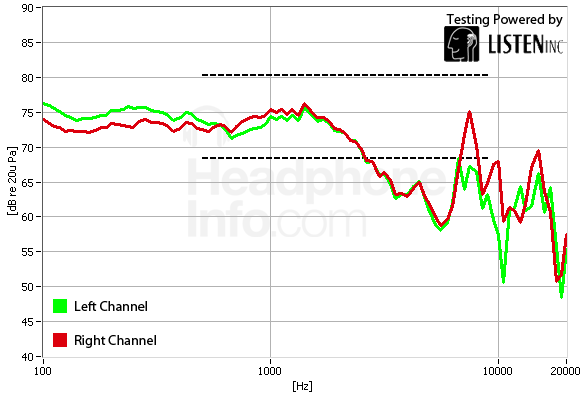
Click here for more information on our frequency response test.
Distortion
{{section_header}}{{section.name}}{{/section_header}}
There's about a 1% level of general distortion on the {{product.name}}s, but even a trained ear will have difficulty hearing it.
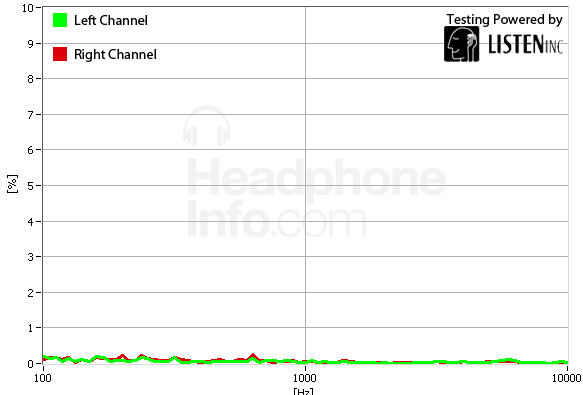
Click here for more information on our frequency response test.
Tracking
{{section_header}}{{section.name}}{{/section_header}}
Even an uninitiated ear will have no trouble picking out the tracking problems present with the {{product.name}}s, as the shifts in channel preference are not only wild, but they will be eminently audible to anyone listening to a song they've heard before in any capacity. This is bad, even worse for high-end cans.
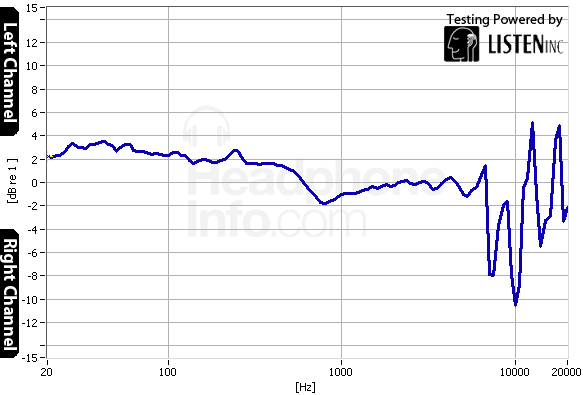
Click here for more information on our frequency response test.
Isolation
{{section_header}}{{section.name}}{{/section_header}}
As far as closed-back cans with no noise attenuation whatsoever, the isolation isn't actually that bad with the {{product.name}}s, as they block out high-end noise above 1KHz fairly well. Unfortunately, like most cans without a better seal or attenuation, they do not block out low-end noise at all, so you'll be able to hear cars, trains, and airplane engines fairly well.
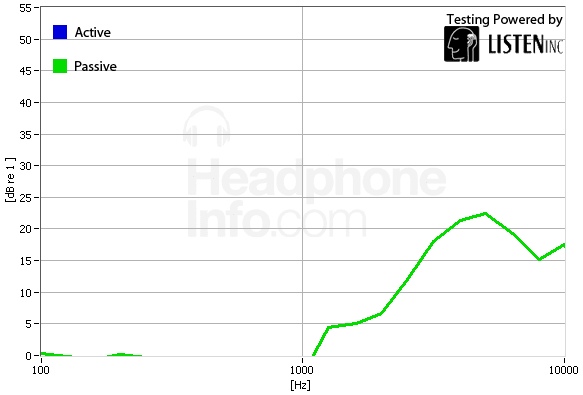
Click here for more information on our isolation test.
Leakage
{{section_header}}{{section.name}}{{/section_header}}
The {{product.name}}s leak a fair bit of sound, but they're not the worst we've seen. Because of their design, it is very difficult to get a good seal on your head, so this may contribute to this as well.
Click here for more information on our leakage test.
Maximum Usable Volume
{{section_header}}{{section.name}}{{/section_header}}
If you were to push these cans, you could theoretically get them to about 112.06dB before they reach a 3% level of distortion, but please do your ears a favor and refrain from doing so, as you could permanently damage your hearing. Users who employ the wireless function of the {{product.name}}s may have trouble gauging this if their battery runs down, so beware.
Click here for more on our maximum usable volume test
Short-Term Use
{{section_header}}{{section.name}}{{/section_header}}
Passing these around the office got a different range of responses, but the general consensus seemed to be that the band digs into the skull a little bit, and that it is difficult to adjust for a better fit.

Extended Use
{{section_header}}{{section.name}}{{/section_header}}
Over time, these generally either get slightly more uncomfortable, or you get used to them, depending on your fit. This one's a wash by the numbers, so it nets the same score.
Customizability
{{section_header}}{{section.name}}{{/section_header}}
Though you can't change the appearance of these cans, you can change how they function, by choosing the cable or wireless operating modes. It's not a lot, but it does afford you some choice, even though we strongly recommend against using it if you're concerned with audio quality. For whatever reason, SMS audio opted to use an RF transmitter instead of bluetooth, which hampers their ability to transmit and receive a large amount of information wirelessly, making your audio quality suffer from its already-terrible state.
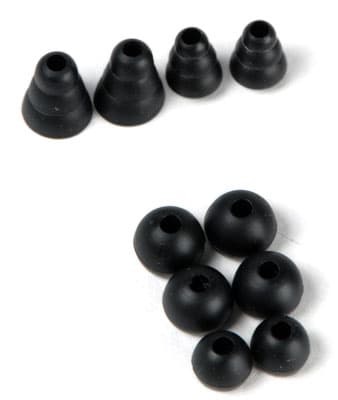
Cable Connectivity
{{section_header}}{{section.name}}{{/section_header}}
The optional cable is 3.93 feet long, and ends in your standard 1/8th inch plug. Also included is a 1/4th inch adapter, though its use is rather unlikely.
Portability
{{section_header}}{{section.name}}{{/section_header}}
There is a rather nice carrying case for the {{product.name}}s, but keep in mind that the plastic-formed body makes these cans inflexible and bulky. They are not collapsible by any means. Unless you have a full-sized backpack, these things are going to seem like an albatross to you.
Maintenance
{{section_header}}{{section.name}}{{/section_header}}
The ear cups of the {{product.name}} are removable, so wiping them down with a damp cloth should be easy. Beyond that, though, there really isn't much you can do to maintain your cans in the event of breakage.
Other Features
{{section_header}}{{section.name}}{{/section_header}}
Battery
The battery of the {{product.name}} is internal, meaning that you have to recharge it via the included USB cable anytime you run low on battery. Keep in mind, though, that this is only if you use the wireless function. If you use the cable instead, feel free to ignore that you even have a battery.
Design
{{section_header}}{{section.name}}{{/section_header}}
Well, here it is, competitor versus competitor. The designs of each set of cans is relatively similar, but with a few caveats. Namely, the Beats offer noise cancellation, and the {{product.name}}s do not. In addition, the {{product.name}}s have wireless capability, and a different rapper behind their marketing. Really, throughout this entire comparison, you should be keeping in the back of your head that most of the differences here are marketing, with a smattering of performance differences. Let's continue, shall we?
Frequency Response
{{section_header}}{{section.name}}{{/section_header}}
If it wasn't for the very bizarre drop in the mid range, the Beats would have a decent frequency response. As it stands, though, both the Beats and the {{product.name}}s can't seem to provide a frequency response that isn't erratic and bizarre. Neither impress here, but the {{product.name}}s have a little more bass, if that's your sole metric of comparison that you are looking for.
Distortion
{{section_header}}{{section.name}}{{/section_header}}
Because of their active noise-cancelling circuit, the Beats have a level of distortion that will be somewhat audible to those with sensitive ears, where the {{product.name}}s have a comparatively lower amount of total harmonic distortion.
Tracking
{{section_header}}{{section.name}}{{/section_header}}
Terrible. Absolutely abysmal. Neither one of these headphones has a tracking response that could be considered anything approaching "mediocre." You will hear extremely obvious channel shifts for certain frequencies that will make your music sound, frankly, awful.
Isolation
{{section_header}}{{section.name}}{{/section_header}}
Neither attenuates much sound on their own, but the active cancellation unit in the Beats does a fair job of blocking the world out. Definitely the better option for going out into the world.
Comfort
{{section_header}}{{section.name}}{{/section_header}}
Having tried both of these headphones on or ourselves, this one is more of a wash. The Beats and the {{product.name}} have about the same clamping force on your head, and the pads are somewhat comfortable, but the bands of each are pretty bad.
Verdict
{{section_header}}{{section.name}}{{/section_header}}
It's hard to recommend either of these headphones, because there are better performing cans on the market for cheaper from every conceivable standpoint outside of marketing hype. That being said, between the two cans mentioned here, we'd probably side with the Beats due to their noise cancelling ability and somewhat tolerable frequency response. Neither performs at the level their price would suggest.
Design
{{section_header}}{{section.name}}{{/section_header}}
Though both sets of cans are over-ears, the ATH-M50s are far more durable, a little more comfortable, and much more versatile for even those in the DJ community, as you can move the ear cups to just about any position you'd like, unlike the rigid {{product.name}}s. The Audio Technicas don't have wireless or any in-line accessories, but that's not necessarily a bad thing.
Frequency Response
{{section_header}}{{section.name}}{{/section_header}}
This is more what a frequency response graph should look like. The ATH-M50s have a much more even frequency response, with fewer wild swings to make certain instruments dominate your music, and it even emphasizes bass for you bass-lovers out there.
Distortion
{{section_header}}{{section.name}}{{/section_header}}
While the {{product.name}}s have about a 1% general distortion level, the {{product.name}}s have an incredibly low THD measure, placing them in the company of the Denon AH-D5000s by this metric.
Tracking
{{section_header}}{{section.name}}{{/section_header}}
As you can see for yourself, the ATH-M50s do not suffer the same inexcusable shifts in channel preference, allowing more accurate playback of properly mixed music.
Isolation
{{section_header}}{{section.name}}{{/section_header}}
Neither set of cans are great at isolation, but they seem to do the trick in the high end. Slight edge to the ATH-M50s here.
Comfort
{{section_header}}{{section.name}}{{/section_header}}
Though this may vary depending on head size, the ATH-M50s are more forgiving of heads that are not child-sized, with less clamping force, and a much easier to adjust band.
Verdict
{{section_header}}{{section.name}}{{/section_header}}
Sweeping across the board with better scores and just under 1/3rd the price of the {{product.name}}s, it's incredibly hard to justify buying the {{product.name}}s over the Audio Technica ATH-M50s if you're looking for sound quality. If you absolutely must have RF wireless capability or the stylings of one "Fiddy," nobody's stopping you from buying his cans.
Design
{{section_header}}{{section.name}}{{/section_header}}
In-ear headphones are very visibly different than over ears, and the Vibrato Remotes aren't much different. In addition to having a non-removable cord, the Vibratos are made of metal, have a kevlar-wrapped cable, an in-line mic/remote at all times, and a much smaller driver.
Frequency Response
{{section_header}}{{section.name}}{{/section_header}}
While the frequency response of the Vibrato Remotes looks somewhat similar to that of the {{product.name}}s, note that they are not quite as erratic, stay within our ideal limits much better, and they preserve more of the high end than do the {{product.model}}.
Distortion
{{section_header}}{{section.name}}{{/section_header}}
Neither set of headphones are distortion-free, but the Vibrato Remotes have less.
Tracking
{{section_header}}{{section.name}}{{/section_header}}
Compared to the {{product.name}}s, the tracking response of the V-Modas is more even than a number divisible by 2.
Isolation
{{section_header}}{{section.name}}{{/section_header}}
Because of the very nature of the design of in-ear headphones, they offer quite a bit of isolation, enough to reduce the total sound pressure level of outside sound by 90+%, which is very good for music lovers. The {{product.name}}s, on the other hand, block out no lower-end sound, which gets annoying if you're near a road or train track of any kind.
Comfort
{{section_header}}{{section.name}}{{/section_header}}
In-ears are typically very uncomfortable for some people by the very nature of the design (resting inside your ear canal), even though the Vibrato Remotes are some of the more comfortable sets of in-ears we've reviewed. The {{product.name}}s, on the other hand, have soft leather ear pads.
Verdict
{{section_header}}{{section.name}}{{/section_header}}
Aside from the comfort thing, the V-Modas are better than the {{product.name}}s in almost every measurable category, and not by a small margin, either. Did we mention that they are about half the cost of the {{product.name}}s? While it's totally up to you to decide what you'd like in a pair of headphones, be sure to weigh all of the pros and cons of what you intend to buy before dropping a huge chunk of change on something that may disappoint you.
Design
{{section_header}}{{section.name}}{{/section_header}}
These active noise-cancelling cans by Sennheiser are fairly different than the {{product.name}}s in that they are ultra-light, attenuate more noise, and rest on the outside of the pinna instead of the skull around it. Users who want lighter headphones will probably like the relatively low weight of the PXC 250-IIs, especially when it's considered how much noise they cancel out.
Frequency Response
{{section_header}}{{section.name}}{{/section_header}}
Outside of a short dip in frequency emphasis, the PXC 250-IIs have a very even frequency response, perfect for equalizing on your smartphone. In contrast, the {{product.name}}s have a very erratic response.
Distortion
{{section_header}}{{section.name}}{{/section_header}}
Though the PXC 250-IIs have a little bit of distortion in the low end, but that's about it. The {{product.name}}s, on the other hand, have a general THD level of 1%.
Tracking
{{section_header}}{{section.name}}{{/section_header}}
Here you can see that neither set of headphones is perfect. What is the deciding factor in comparing these two, is the fact that the shifts of the PXC 250-IIs are not nearly as bad as those found on the {{product.name}}s, even if they're both annoying.
Isolation
{{section_header}}{{section.name}}{{/section_header}}
Due to the active noise cancellation unit, the PXC 250-IIS attenuate much more sound than do the {{product.name}}s, which cover the high end only a little bit.
Comfort
{{section_header}}{{section.name}}{{/section_header}}
This one's tough. Some people don't like on-ears because of the way they put pressure on your pinna, while others don't like the clamping force of the {{product.name}}s. We suggest trying each on for yourself at your local hifi audio store if you have the opportunity, that way, you can absolutely get the best-fitting headphones you can find.
Verdict
{{section_header}}{{section.name}}{{/section_header}}
If you're looking for audio performance and attenuation, we'd say go for the PXC 250-IIs over the {{product.name}}s. Not only are they more affordable, but they perform better by most metrics. If you're more worried about style, however, it's hard to dismiss the {{product.name}}s on that basis.
Conclusion
{{section_header}}{{section.name}}{{/section_header}}
If you're seriously considering buying the {{product.name}}s, be aware that they fall short in frequency response, tracking and distortion, and that's before you turn on the rather outdated RF wireless, which makes the performance even worse. While freeing one's self of cables and cords is generally an interesting idea from a convenience standpoint, it's far from perfect just yet.
It's very hard to ignore the shortcomings of the {{product.name}}s simply because of the price point they're at. For ~$400 you could be getting cans that perform so much better, or doing the same things but more efficiently. Not all bluetooth headphones (the more modern and effective wireless option) are $400, either. With very bad tracking issues and a mediocre frequency response, these headphones are little more than SMS Audio cashing in on the marketing phenomenon of celebrity-endorsed headphones.
As far as positives go, there are a few, for example if you like having a ton of accessories for your cans, the {{product.name}}s come with a bunch. On top of that, the cable being replaceable is a huge durability plus, though we'd be more worried about the plastic band. Despite how much we've been tough on these headphones, they're not inherently bad, they're just probably not worth their MSRP of $400.
Meet the tester
A seasoned writer and professional photographer, Chris reviews cameras, headphones, smartphones, laptops, and lenses. Educated in Political Science and Linguistics, Chris can often be found building a robot army, snowboarding, or getting ink.
Checking our work.
Our team is here to help you buy the best stuff and love what you own. Our writers, editors, and experts obsess over the products we cover to make sure you're confident and satisfied. Have a different opinion about something we recommend? Email us and we'll compare notes.
Shoot us an email